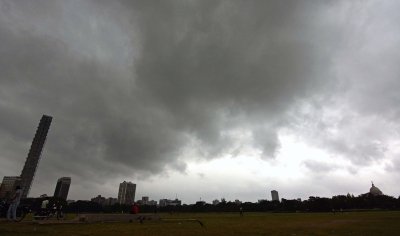Kolkata: West Bengal, compared to other states, does not have a large coastline, as it spans just 210 km in the districts of East Midnapore and South 24 Parganas but faces the major problem of maximum coastal erosion due to climate change-induced rising sea levels.
This issue is cited by Dr Anjal Prakash, the research director with the Bharti Institute of Public Policy, Indian School of Business and one of the authors of the 6th assessment report of Intergovernmental Panel on Climate Change (IPCC).
Based on his observations and analysis about the findings of the same report, he feels that this issue of coastal erosion could have significant implications for communities living along the coast and hence, impact the infrastructure and the economy of the region.
In fact, Prakash’s apprehensions about coastal erosion in West Bengal was first highlighted in a report of the National Centre for Coastal Research (NCCR), under the Union Ministry of Earth Sciences, which claimed that that West Bengal recorded maximum coastline erosion among all coastal Indian states between 1990 and 2016 at 63 per cent, followed by Puducherry at 57 per cent, Kerala at 45 per cent, and Tamil Nadu at 41 per cent.
In terms of land loss on this count during the same period, the quantum was 99 square km of land, as against land accretion of just 16 square km during the same period.
Based on the observations highlighted in the 6th assessment report of the IPCC, the head of the energy economic programme of the Asian Institute of Technology and one of the authors of the same report, Joyashree Roy feels that the climatic hazards in the coastal belts and the resultant loss and damage are likely to aggravate further with every additional warming.
Experts are also of the opinion that the people who are mainly responsible for this coastal crisis in West Bengal are less affected than those who suffer without contributing to that crisis. According to them, natural factors like sea level rise and storms which these coastal regions are prone to, there are several human-made factors which are often leading to such coastal erosions.
The arbitrary real estate development (tourism-related constructions), flouting all norms, had been a major contributing factor adding to the crisis of coastal erosion.
The fact that rampant and arbitrary tourism related real estate activities had been hampering the natural ecological ambience in the coastal areas of West Bengal was observed in a recent judgement by the National Green Tribunal (NGT), which ordered the immediate demolition of a private resort at Dulki village under Gosaba, one of the main deltaic islands in the Sundarbans region in South 24 Parganas
While passing that order, the NGT observed that the said resort built in the critically vulnerable coastal area was constructed clearly violating the prescribed norms under coastal regulation zone notification on this count.
Environment activists like S.M. Ghosh feel that this Dulki incident is not a one- off case and throughout the coastal belts of West Bengal, especially places having a tourist appeal, such violations are quite rampant.
According to experts, the coastal regions in West Bengal, especially those in the Sundarbans region, had always been facing an existential crisis for quite some time because of a number of climatic factors. In addition to that, they feel, these human- made factors are adding fast to the alarm of an aggravated crisis. According to the experts, the necessity of the day is not just to avoid these human- made adverse factors but also adopt scientific mitigation options to reduce the rate of threat.
However, recently there has been a silver line on this count in the Sunderbans region, where a unique initiative by an NGO involving the local women in the region has started the mission for systematic and large-scale mangrove forestation in the region.
The Nature Environment & Wildlife Society (NEWS) started a mission in 2007 with just around 50 hectares spread over three small local villages of Dulki-Sonagaon, Amlamethi and Mathurakhand involving just 160 women from these villages. The success of this systematic mangrove forestation could be first felt in 2009 when Cyclone Aila’s tail touched the Sundarbans and moved to Bangladesh. While the rest of the Sundarbans was severely affected by the touch of the tail, the patches of land where the mangrove forestation was done under the project was absolutely untouched
Gradually, over the years over 18,000 local women and around 4,600 hectares of land scattered over 183 villages in 14 community development blocks in the Sundarbans areas were brought under this large-scale mangrove forestation.
–IANS


Comments are closed.